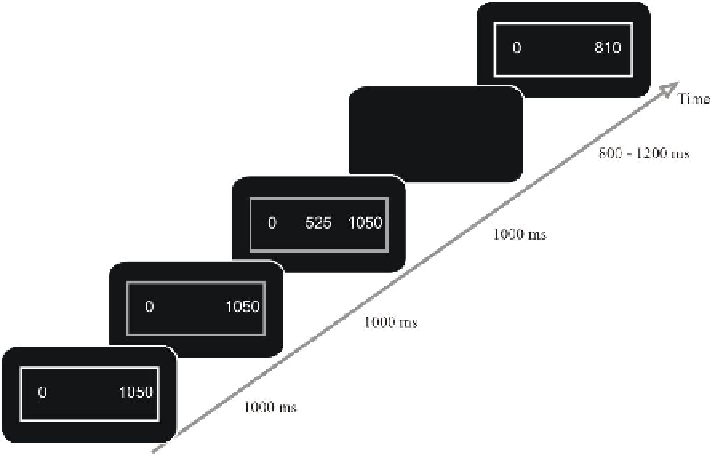Information Technology Reference
In-Depth Information
2.2 Experimental Procedure
The subjects took part in two sessions which were scheduled two weeks apart. They
were seated in a comfortable chair in front of a 19 inch CRT display. Each session
started with a test block to familiarize the subjects with the task. It was the subject's
task to make decisions by clicking two mouse buttons with their left or right index
finger.
First, two numbers (
and
) were shown to the subject within a white frame
(see figure 2), which turned into one out of two colors, either light blue or pink. Ac-
cording to this color codification, the subjects distinguished between two conditions:
the CE method termed as 'lottery condition' and the bisection method termed as 'bi-
section condition'. Then a third number was revealed, located between the numbers
shown before, and the subjects had to make a decision by means of a YES/NO re-
sponse. Finally the screen turned back into black.
As for the lottery condition, the outer numbers represented payoffs of a fifty-fifty
lottery and the inner number a sure payoff. The subjects were asked whether they
preferred a sure payoff (YES), or opted for playing the fifty-fifty lottery (NO).
Fig. 2.
Sequence of screens shown to the subject
Additionally, for the bisection condition the outer numbers corresponded to the
utility interval boundaries, while the inner number characterized the perceived utility
interval center. The subjects had to decide whether they sensed the first utility interval
as larger than the second utility interval (YES or NO) concerning the perceived joy at
receiving these amounts of money.
Hence, the question in both conditions resulted in asking whether the same interval
had been perceived as larger or not (see figure 3).

